Fortinet Fortinet NSE 7 - LAN Edge 7.0 NSE7_LED-7.0 Exam Dumps: Updated Questions & Answers (December 2025)
What is the purpose of enabling Windows Active Directory Domain Authentication on FortiAuthenticator?
Exhibit.
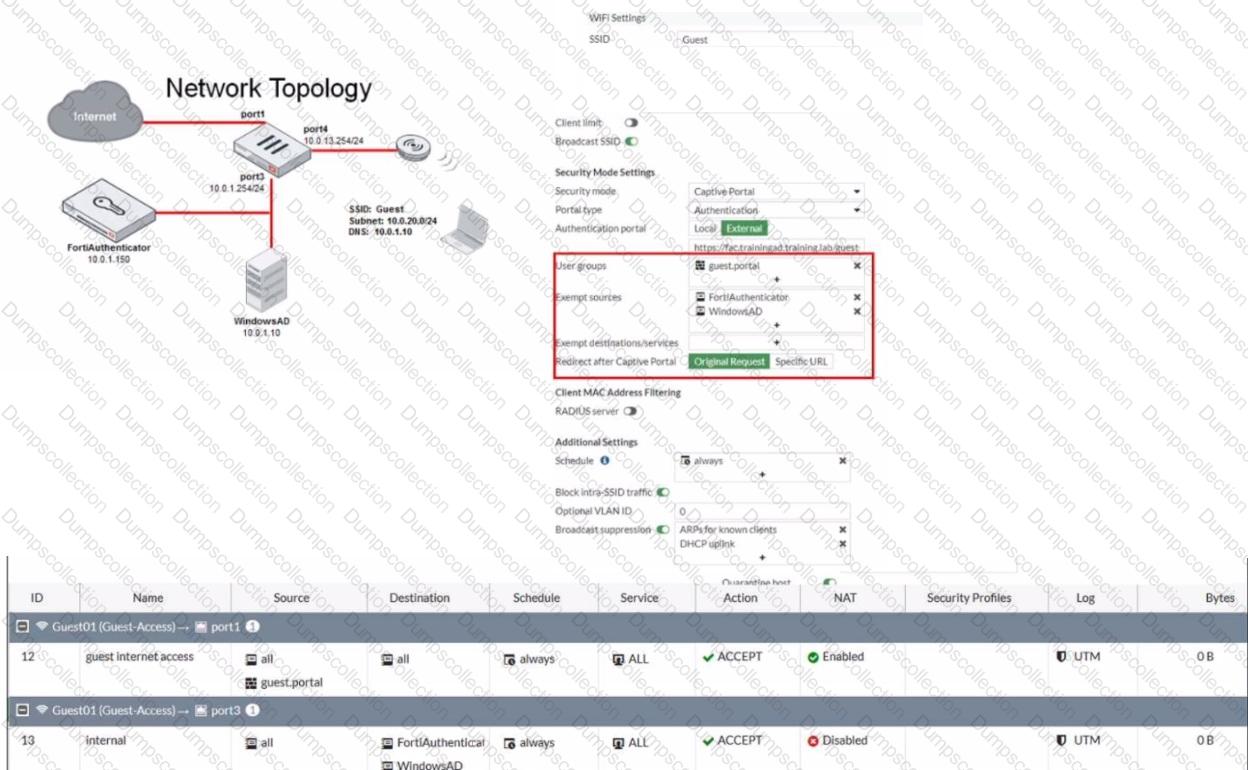
Refer to the exhibit showing a network topology and SSID settings.
FortiGate is configured to use an external captive portal However wireless users are not able to see the captive portal login page
Which configuration change should the administrator make to fix the problem?
An administrator is deploying a new FortiGate device using zero-touch provisioning. Before deployment, the administrator added the FortiGate serial number on FortiManager and configured all the FortiGate settings FortiGate has a factory default configuration. However, when the administrator connects FortiGate to the network, FortiManager does not start the installation automatically. Which two scenarios are likely to cause this issue? (Choose two.)
Which CLI command should an administrator use on FortiGate to view the RSSO authentication process in real time?
Refer to the exhibit.
Examine the FortiGate RSSO configuration shown in the exhibit.
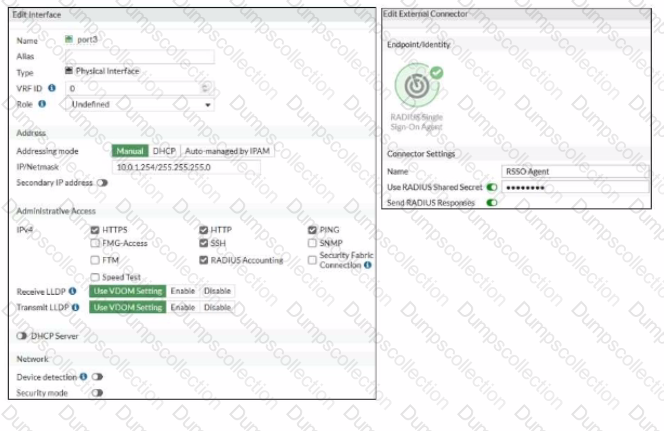
FortiGate is configured to receive RADIUS accounting messages on port3 to authenticate RSSO users. The incoming RADIUS accounting messages contain the username and group membership information in the User-Name and Class RADIUS attributes, respectively.
Which three settings must you configure onFortiGate to successfully authenticate RSSO users and matchthem to the existing RSSO user groups? (Choose three)
Which two statements about FortiSwitch manager are true1? (Choose two)
Refer to the exhibit.
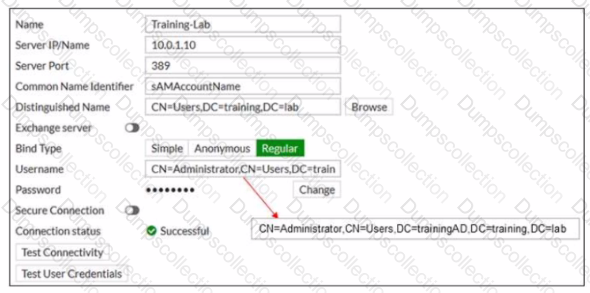
Examine the LDAP server configuration shown in the exhibit Note that the Username setting has been expanded to display Its full content
On the Windows AD server 10.0.1.10, the administrator used dsquery. which returned the following output:

According to the output which FortiGate LDAP setting is configured incorrectly''
Refer to the exhibit.
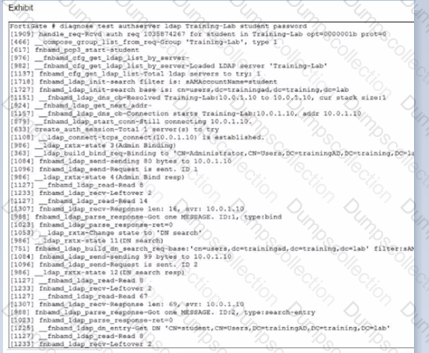
Examine the partial debug output shown in the exhibit.
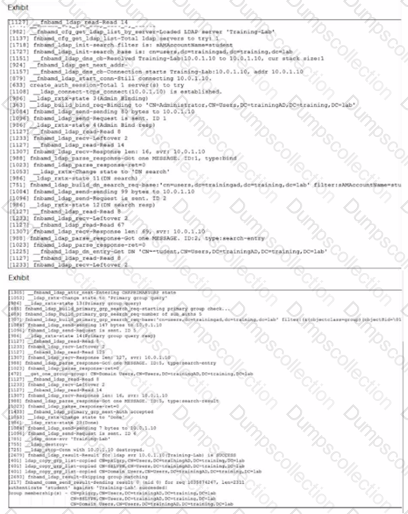
Which two statements about the debug output are true? (Choose1 two.)
Refer to the exhibits.
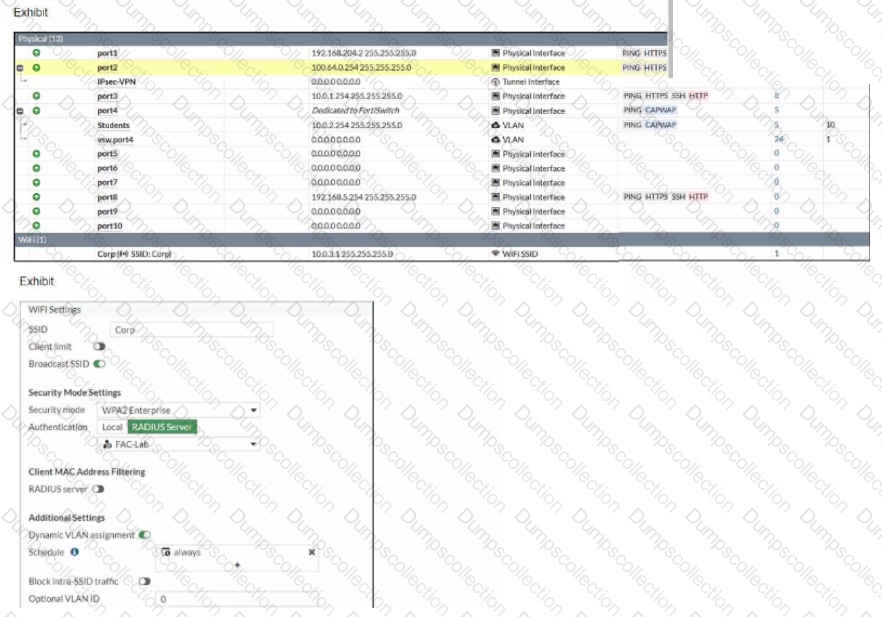
An administrator has configured FortiGate with an SSID (Corp) with dynamic VLAN assignment, and also configured a RADIUS server to send IETF 64, IETF 65, and IETF 81 VSAs.
The administrator has verified that the RADIUS server is sending all the required information to FortiGate. However, FortiGate is not assigning correct VLANs to the wireless clients.
What is causing the problem?
Refer to the exhibit
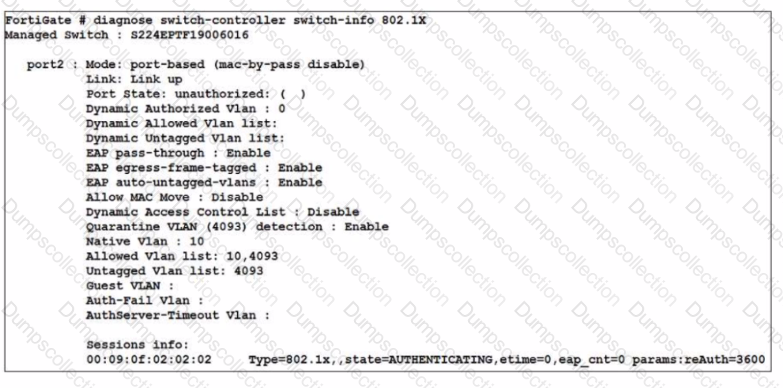
A device connected to port2 on FortiSwitch cannot access the network The port is assigned a security policy to enforce 802 1X authentication While troubleshooting the issue, the administrator obtains the debug output shown in the exhibit
Which two scenarios are likely to cause this issue? (Choose two.)

